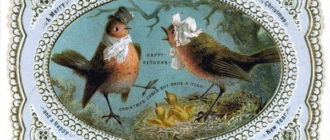The Louvre is a place where many art lovers, perhaps, would like to stay and live. Hundreds of thousands of masterpieces collected from all over the world adorn the halls of the former residence of the kings. Alas, it has been forbidden for anyone to live in the Louvre since the time of the French Revolution, and it will not be possible to see the entire collection of the museum, especially if there is only a couple of hours on the tour. But not to look at the most outstanding exhibits, treasures from treasures is an unforgivable oversight.

Mona Lisa. Da vinci
“La Gioconda” by Leonard da Vinci is a world heritage, in fact, a symbol of the Louvre. The portrait of Lisa Gherardini (Lisa del Giocondo), wife of the Florentine merchant del Giocondo and mother of six children, is without exaggeration the most recognizable image in the world.
After the canvas was attempted several times, and also because of the poor condition of the masterpiece, access to it was limited – the exhibit does not leave the museum, is located in a separate hall of the Denon wing, protected by armored glass. A fence separates the canvas from numerous spectators.

Venus de Milo
The symbol of female beauty of all times and peoples – Venus de Milo supposedly belongs to the chisel of the sculptor Agesander (Alexander) from Antioch.
They say that when the French and the Turks had a heated argument over the discovery on Milos in 1820, in the heat of a man’s dispute the victim, according to tradition, turned out to be a woman. More precisely, her sculpture – Aphrodite lost her hands, which have not been found to this day. You can see the beautiful goddess in the Sully wing, in one of the Greek halls.

Raft “Medusa”. Gericault
Writing “The Raft of” Medusa “” Theodore Gericault (Jean-Louis-André-Théodore Géricault) played the ambiguous role of the biblical Ham, who bared either “the shame of his father” or his vices … They say that the canvas, written based on real events , which happened in the summer of 1816 off the coast of Senegal, caused a storm of emotions among the public. And it was mostly resentment.
Is it possible to portray SUCH? How could one choose for the picture not a heroic or, at worst, a classic plot, but an episode so humiliating for the human race, such a shameful exposure of the animal nature of man and such a shame for the navy … Massacre, madness, cannibalism … on the thirteenth day, only a tenth survived.
Of course, everyone would prefer to forget about this shame as soon as possible, but the artist’s canvas did not allow this to be done. To depict this hymn to despair, Gericault is said to have practiced painting the dying in hospitals and the corpses of those executed. Since 1824, the painting belongs to the Louvre, who acquired it from a close friend of the painter after the death of the author. The masterpiece can be found in the Denon Gallery – it is displayed in one of the halls dedicated to romanticism.
Lacemaker. Vermeer

The most famous painting by the Dutch painter Jan Vermeer is in the Richelieu Gallery, in one of the halls of Dutch painting.
The lacemaker sits against the background of a white wall so that nothing distracts the viewer from the female image. The picture is characterized by some of the optical effects inherent in photography. It is possible that the artist used a camera obscura while working.

Seated Ramses II statue
The Louvre is the owner of one of the richest collections of exhibits from Ancient Egypt. In the Sully wing there is a unique statue of a seated Ramses II – a masterpiece of plastic art, stunning in its realism and atmosphere. The statue of the ancient Hittite conqueror is one of the “pearls” of the Louvre collection.






